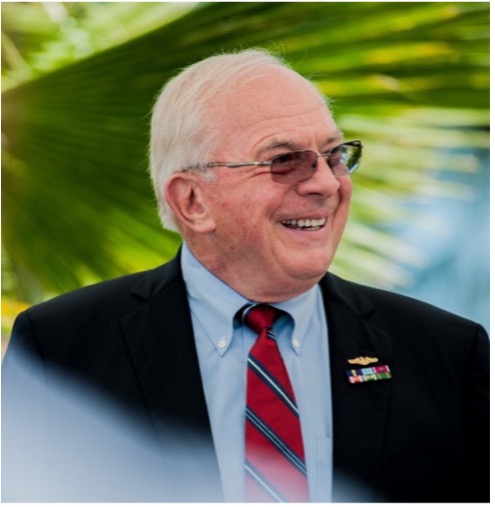Vice Admiral Albert H. Konetzni, Jr., USN (Ret.)

Vice Adm. Al Konetzni, United States Navy (retired), is a native of Pleasantville, New York. Attending the United States Naval Academy, he graduated with merit and was commissioned an Ensign in June of 1966.
A career Nuclear Submariner, Admiral Konetzni has successfully commanded at all levels and has extensive experience in strategic planning, financial and personnel management, engineering, innovation, foreign affairs, leadership, and lecturing.
During his time as Commander of all United States Submarines in the Pacific from 1998 until 2001, Konetzni engineered and executed an innovative plan to solve the Navy’s high attrition of young Sailors. In 1998, the Navy was losing one out of every three young Sailors from their first commands, after just completing costly initial training.
The tragic loss of talented manpower was not acceptable to the Admiral, and he made it his personal goal to solve that problem. The driving force behind a revolutionary program, in just over two years he reduced personnel attrition in the Pacific Force from 25 percent to 7 percent. Based on these astounding results, the Navy immediately incorporated his program as a model. The Wall Street Journal published a front-page article featuring Admiral Konetzni and his attrition achievements (July 2000).
During this same period, Konetzni challenged Defense Department and Congressional bureaucracy to save a squadron of submarines from scheduled early decommissioning and destruction. In addition, he initiated the study, planning, and execution to return submarines to Guam, Marianas Islands. These actions not only saved billions of taxpayer dollars but also ensured proper maritime defense would be in place for the U.S.
From May 2001 through July 2004 as Deputy Commander, U.S. Fleet Forces Command and U.S. Atlantic Fleet, he was responsible for the readiness and performance of 160 ships, nearly 1,200 aircraft and 50 bases and facilities manned by more than 133,000 personnel.
During this unusually critical three-year period in Naval History, the Navy was called on repeatedly to deploy in defense of the nation. The terrible events in New York and at the Pentagon, September 11, 2001, tested the readiness of the Atlantic Fleet, and it was Admiral Konetzni who personally ensured the readiness of those Fleet assets.
In 2003, when the majority of the Atlantic Fleet surged to fight in Operation Iraqi Freedom, Konetzni helped the Chief of Naval Operations reevaluate how the Navy deployed and could maintain presence globally. He was the principal engineer of the revolutionary Fleet Response Plan (FRP). FRP has transformed Navy planning and has been heralded as a possible training and maintenance model for adoption by all service branches. Simply stated, the plan calls for the Navy to have six surge-ready Carrier Strike Groups (CSGs) and an additional two CSGs ready to follow shortly thereafter. This plan has enabled the Navy to rethink how it mans, maintains, equips, trains, and ultimately fights its ships.
Konetzni holds a Masters Degree in Industrial Personnel Administration from George Washington University and has coauthored the book Command at Sea.
For his Naval Service, Konetzni has received two Distinguished Service Medals, six awards of the Legion of Merit, and three awards of the Meritorious Service Medal. In addition, for his efforts regarding Homeland Security, he received the U.S. Coast Guard Distinguished Service medal.
Konetzni retired from active duty on Sept. 1, 2004.
Konetzni was employed by the Washington Division of URS as President of West Valley Environmental Services LLC from May of 2006 to May of 2009. At West Valley, New York, he built an extremely strong and effective team of employees, contractors, Department of Energy, and New York State regulators. As a result, significant progress has been made toward the cleanup of nuclear waste at the West Valley site.
Konetzni was employed by Energy Solutions as Sr. Vice President of Federal Services Eastern Operations from June 2009 until May 2010. He served as Vice President, Strategic Business Programs and General Manager, Marine Services Division for Oceaneering International, Incorporated from September 2010 to May of 2016 when he retired.
